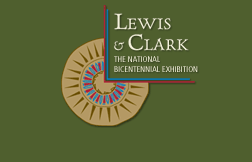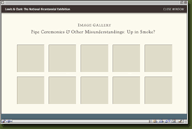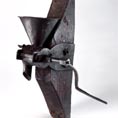
|
Lesson Plan 1: Corn Mill Miscommunication OBJECTIVES Students will:
MATERIALS
BACKGROUND Except for Sacagawea, who has been elevated to almost mythological status today, few Indian women are mentioned in the journals. Carolyn Gilman writes in Lewis and Clark: Across the Divide: "When they [Lewis and Clark] did see women, they decried what seemed like oppression." They often referred to the women's work as "drudgery" and to the women themselves as "drudges" or "squaws." This idea that Indian women were drudges was a preconception that Lewis and Clark brought with them. During the expedition, it seems they failed to let their observations and experiences change their minds. Were these women oppressed? Although the status of women varied in all Indian societies, the relationship between gender and power differed significantly from European cultures. Even in nominally male-dominated groups, men actually had limited power over women. Indian cultures stressed individual autonomy and relative personal freedom, independent of gender. Men could not dominate women as in a Christian society, which operated on an elaborate patriarchal gender system. Indian women and men had separate but equally important economic roles in community life. Hunting and warfare gave greater prestige and power to men, but the relative lack of social domination and submission in interpersonal relations lessened the impact on women....in general, the Indians who encountered Europeans in the Illinois Country emphasized complementary gender roles and personal autonomy over hierarchy and interpersonal dominance.
Historian Carolyn Gilman writes: The women's work that Clark condemned as 'drudgery' was the most important source of Indian women's power. They did work hard, but it gave them economic control. Unlike Euro-Americans, Plains Indians believed that the products of a woman's labor belonged to her, not to her husband. Even though a man might shoot a buffalo, the hide belonged to the woman who tanned it. All the things she made from the hide belonged to her as well. Mandan and Hidatsa women guarded the secrets of skilled craftwork as jealously as medieval guilds in Europe. The secrecy kept prices high and reinforced women's control. A mother trained her daughter to give a present whenever she was taught a skill. The price for learning sacred skills like pottery was especially high. But in Virginia, women's labor was their husband's property. Over the winter, Lewis and Clark bought countless bushels of corn, but they paid the men, not the women who had produced the corn. And though they criticized Indian men for treating women like slaves, when they compensated Sacagawea for her services, they paid Touissant Charbonneau, her husband.
OPENING How do our perceptions about gender roles shape what we see? Read the following quote by historian Carolyn Gilman: The basis of the Mandan and Hidatsa tribes' great wealth was the surplus of corn they sold to traders and other tribes. The scale of their agriculture was captured by fur trader Alexander Henry, who rode between the villages in 1806: "Upon each side were pleasant cultivated spots, some of which stretched up the rising ground on our left, whilst on our right they ran nearly to the Missouri. In those fields were many women and children at work, who all appeared industrious....The whole view... had the appearance of a country inhabited by a civilized nation." PROCEDURE
CLOSING Read the following quotes by historian Carolyn Gilman: "The women's work that Clark condemned as 'drudgery' was the most important source of Indian women's power. They did work hard, but it gave them economic control. Unlike Euro-Americans, Plains Indians believed the products of a woman's labor belonged to her, not to her husband. Even though a man might shoot a buffalo, the hide belonged to the woman who tanned it. All the things she made from the tanned hide-clothes, bags, even the tipi-belonged to her as well, unless she gave them away." "It was women who owned and worked the fields with their sisters and daughters, and guarded the ripening corn from birds and boys. Women kept the seed and danced to lure the corn spirits back each spring. Women processed the food so it would last through the winter, and prepared it into meals." "Euro-Americans also divided labor by gender, but differently: to them, farming was the work of men and slaves. Seeing women in the fields, white men often concluded that they were slaves, as well. European preconceptions about gender roles even made it difficult for them to see what the Indians were doing as agriculture." Ask, "Why were Lewis and Clark blind to the Mandan women's economic power?"
|
|||||||||||||||
 |
 |
 |
 |



